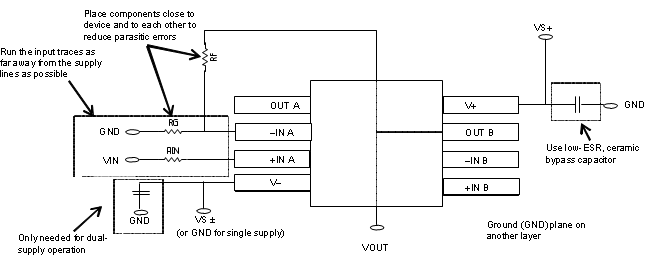SBOS735 September 2015 OPA2171-EP
PRODUCTION DATA.
10 Layout
10.1 Layout Guidelines
For best operational performance of the device, TI recommends good printed circuit board (PCB) layout practices. Low-loss, 0.1-µF bypass capacitors should be connected between each supply pin and ground, placed as close to the device as possible. A single bypass capacitor from V+ to ground is applicable for single-supply applications.
10.2 Layout Example
 Figure 44. Operational Amplifier Board Layout for Noninverting Configuration
Figure 44. Operational Amplifier Board Layout for Noninverting Configuration